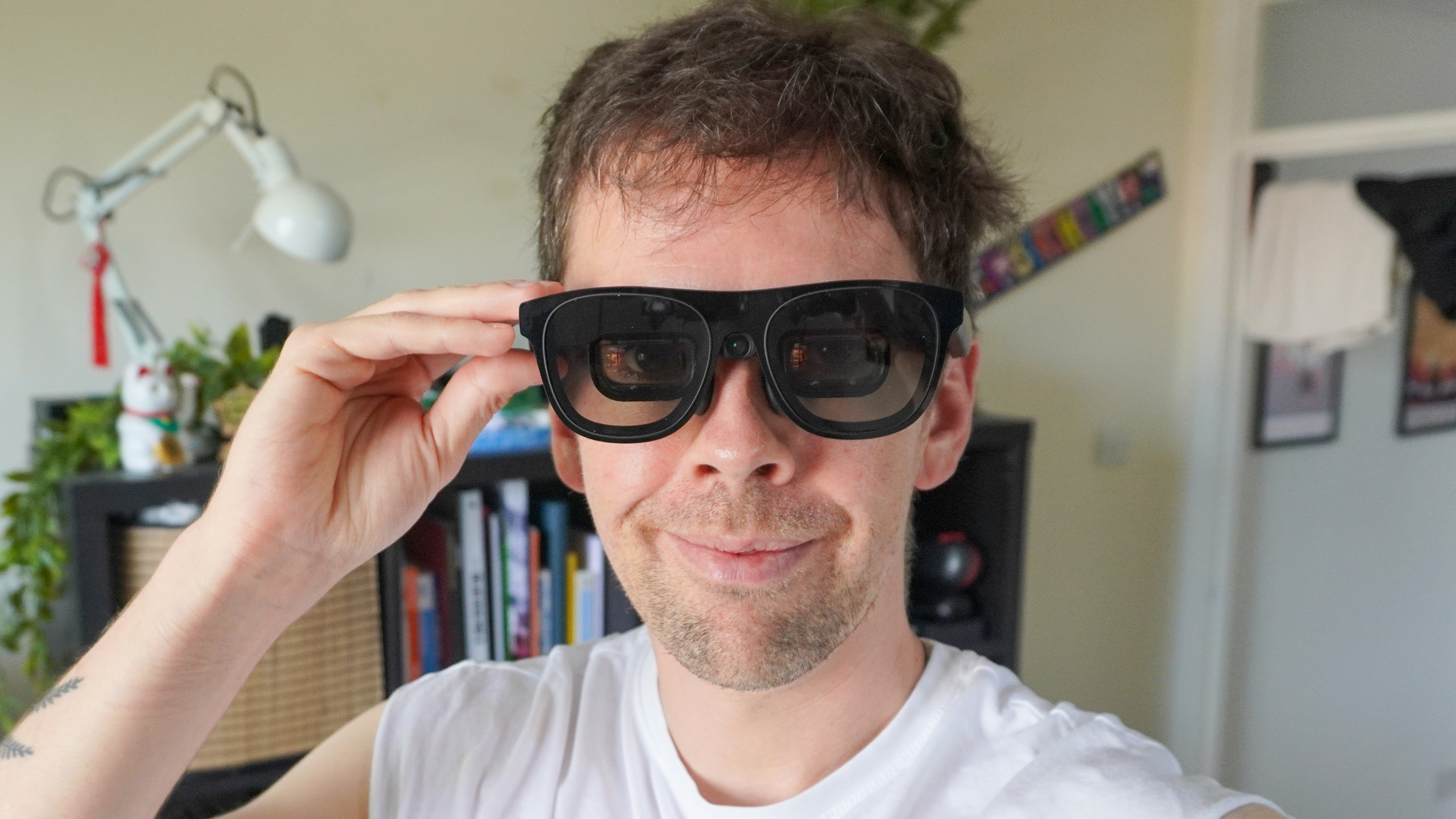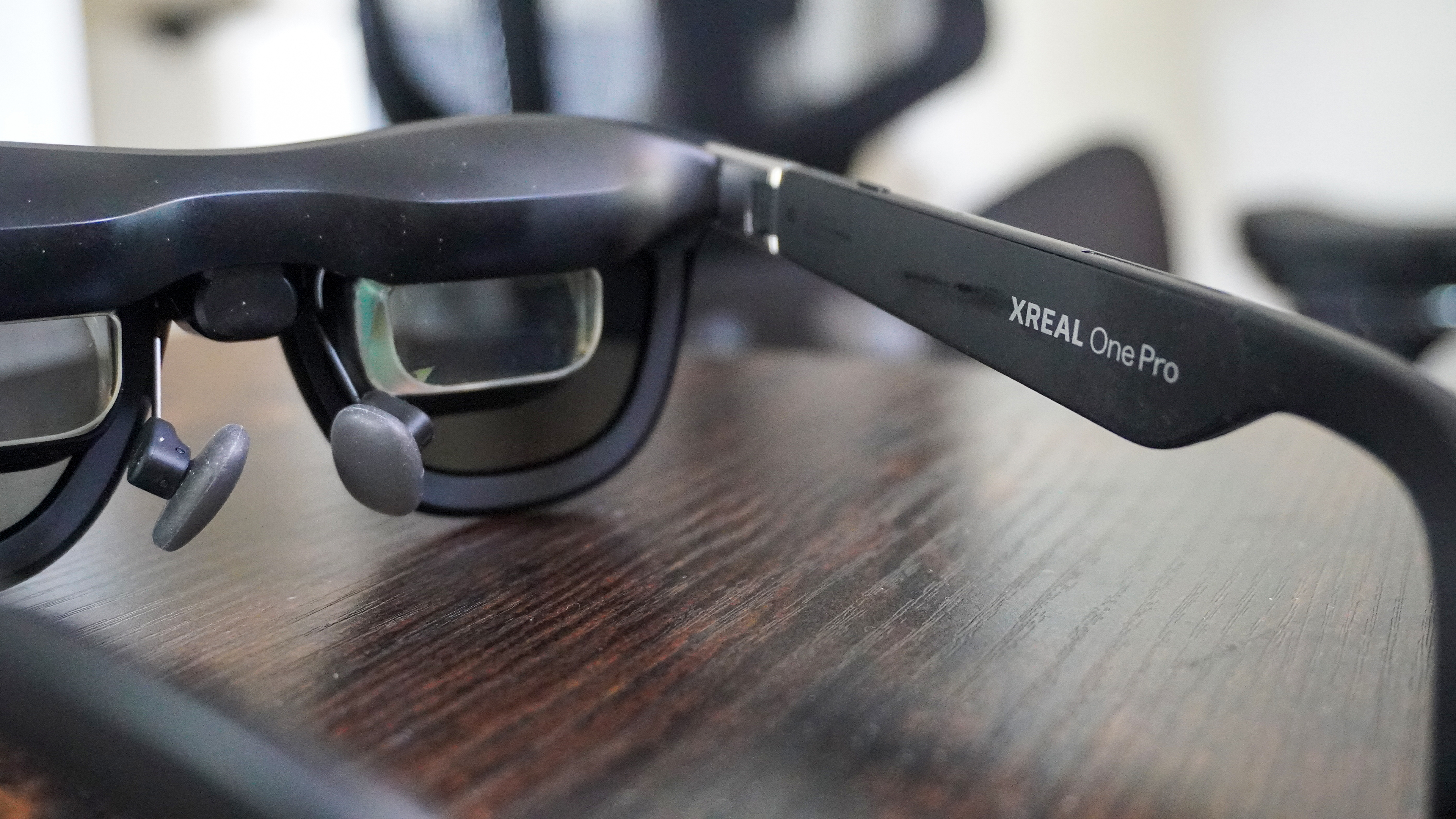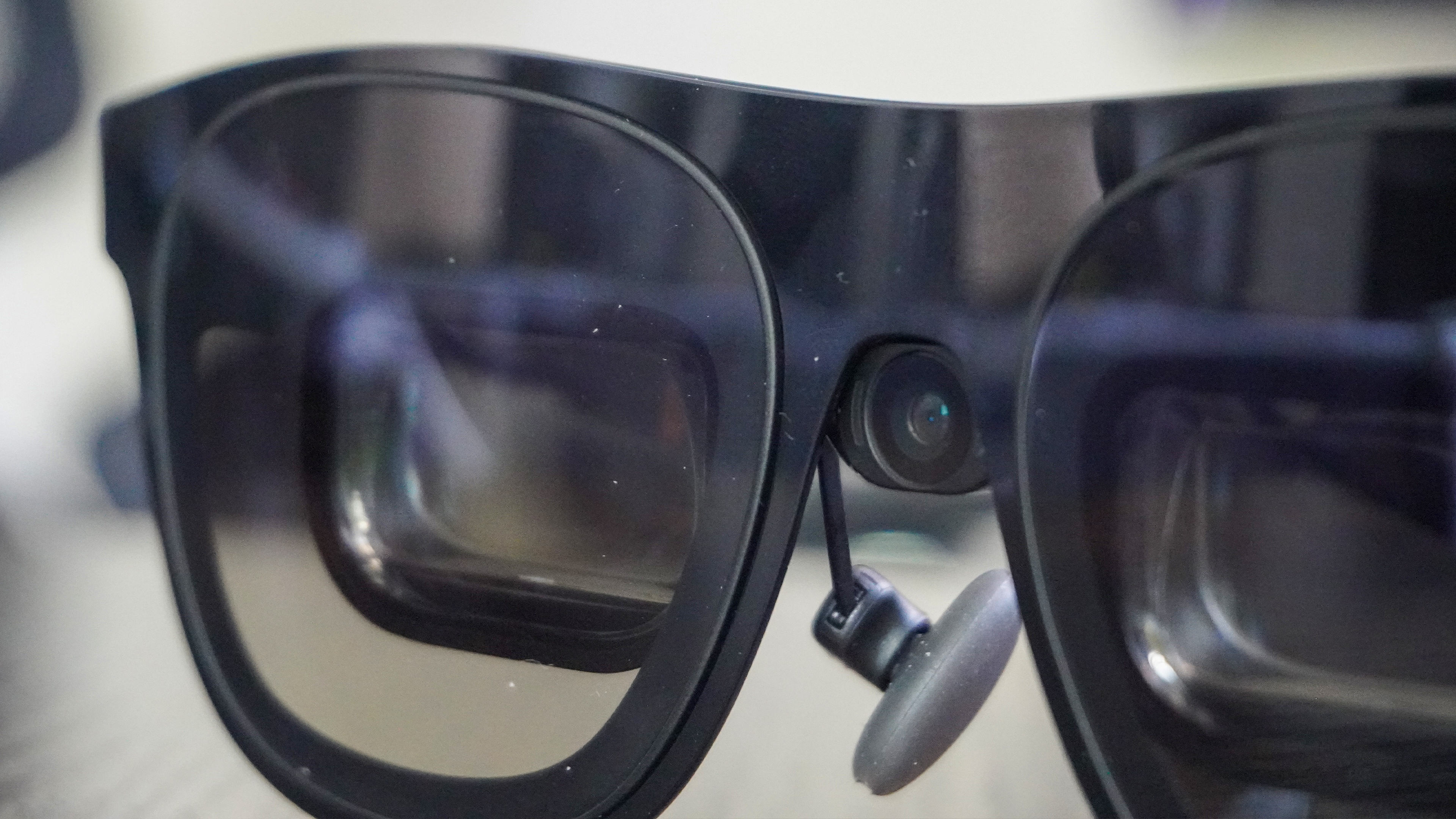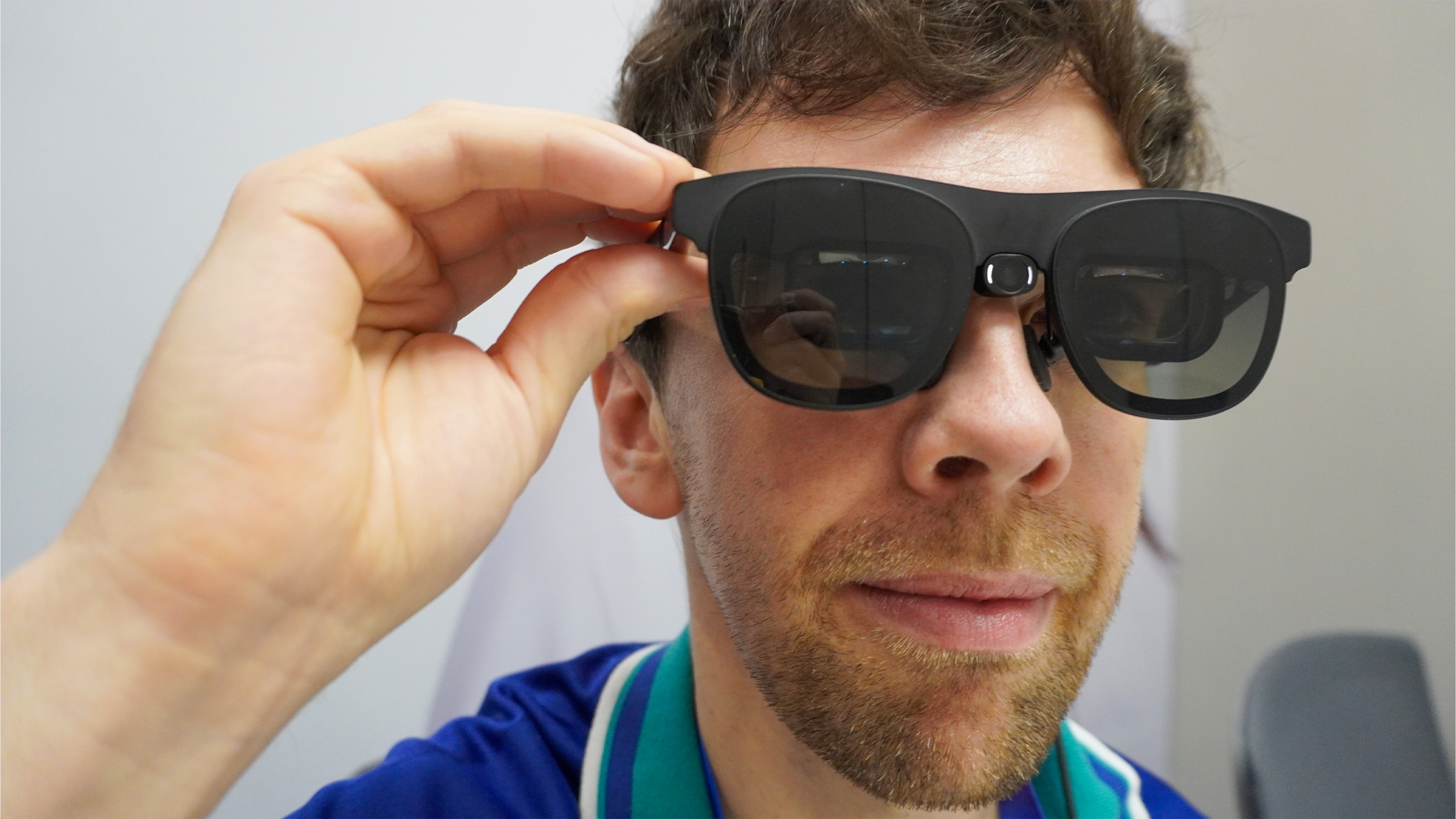
After testing them way back at CES 2025, the Xreal One Pros are finally ready for primetime. And spoiler alert: they are the best AR glasses you can buy right now, but there’s a catch.
The new Sony Micro-OLED display with a smaller prism optic provides incredible picture quality, which really brings the spatial features of that X1 chip into focus in a way the Xreal Ones couldn’t match. Seeing so much more of that simulated 32:9 ultrawide display with the expanded 57-degree field of view (FOV) is an incredible experience to have when on a long-haul flight.
Plus, you’re getting that same great wearability, premium design and Bose audio system from these other specs to make a great all-in-one device.
But that’s also the elephant in the room — the more affordable Xreal One brings a lot of the same to the table. The only difference is in the older bird bath display tech that brings a smaller 50-degree FOV (the typical chunky prisms behind the lenses over the smaller X Prism used in the Pros).
Don’t get me wrong, that is a marked upgrade, and this is the best display quality you can get on a pair of AR glasses today. From the smaller footprint leading to a more inconspicuous look on your face to a noticeably improved display with no reflections, it’s clear Xreal has delivered something better and more “pro.”
But is going pro worth an extra $150? That’s a tough one, and it comes down to your use cases and care for display quality. So let’s break it down:
- If you are a very enthusiastic user: Regularly on the go and using them at home in place of a monitor (yes, those people exist — you’re looking at one)? Then the One Pro is a stellar long-term investment.
- If you just want a really good display for portable use: You’re getting enough from the Xreal One here that the Pro price increase isn’t necessarily worthwhile for you.
Let’s get into it.
Xreal One Pro AR Glasses: Cheat Sheet
- What is it? This is a pair of AR glasses — simply connect them to any device via USB-C and you can either extend or duplicate the device’s screen onto the specs for a great portable external monitor on the go.
- Who is it for? This is for those who are already well-versed in AR glasses and want to jump to the next generation.
- What does it cost? Currently, you can pick up a pair for pre-order pricing of $599, but as of July 1, that goes up to the MSRP of $649.
- What do we like? In terms of AR glasses you can buy right now, these have the best picture quality you can get. The redesigned optics and display prisms deliver supreme clarity, color and a wider field of view to really take your spatial computing and gaming to the next level.
- What don’t we like? The Xreal Eye shows promise for 6DoF, but at the moment, it’s just a pretty average camera. And that $649 price tag is going to sting when there are cheaper options out there.
Xreal One Pro AR Glasses: Specs
Display |
Sony 0.55-inch Micro-OLED display, 171-inch virtual screen with 1080p resolution, 120Hz refresh rate, 57-degree FOV, up to 700-nits of perceived brightness, software/hardware hybrid IPD adjustment |
Audio |
Dual speakers tuned by Bose |
Chip |
Xreal X1 Chip with Optic Engine 4.0 |
Price |
$599 intro price / $649 retail |
Xreal One Pro AR Glasses: The ups
“We are currently flying at 34,000 feet,” the pilot announced. I look around at my poor fellow passengers having to deal with their pitiful seatback entertainment screens, pop on my Xreal One Pros and go to a different world of entertainment and productivity.
New display. New future.

Instead of a beasty 0.68-inch bird bath prism lens offering a chunky piece of glass behind each lens, Xreal has compressed this all down into a vastly smaller flat prism design. But smaller actually means bigger here, as it can simulate a 171-inch display with a wider 57-degree field of view.
The difference is small on paper when you think about it (the Xreal One’s FoV comes damn close at 50 degrees).
But what this means is you could see a whole screen in front of you without needing to turn your head too much. Throw the 120Hz refresh rate and expert color calibration in, and you’ve got an uber smooth experience for any games you throw at it, and zero refresh rate flickering when you’re hard at work. And on top of that, any sign of fringing or edge blur is completely gone.

It’s clear this is the display tech that we’ll all be using going forward, and Xreal is making the most of it with the X1 silicon. The 3 Degrees of Freedom (DoF) tracking made possible here means I could very easily snap a 147-inch 32:9 ultrawide display onto the seat back for full immersion in my multi-tasking workload.
That’s right — even in one of the trickiest scenarios that is a flight, tracking an anchor point is a cinch on these! Of course, there are other modes here too like smooth follow and moving the display to the top corner, so I could talk to the flight attendant too.
Speaking of talking to the flight attendant…
Sneaky sleek

The only difference in design between these and the Xreal One is that the Pros are slightly heavier. In scenarios like long-haul flights, I’ve gotten used to the double takes wearing larger-than-life specs, but Xreal has done me good here with a sleek, subtle design that nobody bats an eyelid at.
Honestly, the flight attendant just said “nice glasses” after giving me a meal and moved on. That is a world’s first for AR glasses for me, and it speaks to how well disguised the prisms are here.
Also, shout-out to the electrochromic lenses being able to completely shut everything out, and the software IPD settings. There’s a hardware requirement for extreme circumstances, but for the vast majority of you, the customization on board is more than enough!
Xreal One Pro AR glasses: The downs
As the flight across the Atlantic and America towards California reached its end, I took a bite of my pretty terrible pizza pocket snack (American Airlines really needs to step its game up food-wise), and got to thinking about the limiting factors.
Feeling snap-happy?

You may have noticed in my pictures of the original Xreal One that there’s a small rubberized area on the nose area of the glasses. Turns out you can pop that out and add in the Xreal Eye Camera — a 12MP snapper that gives you some decent (but not great) pictures and 1080p video from a first-person perspective. The color balance is there, but the low-light performance is just not.
Plus, the lack of a battery means that while you can store the photos temporarily on the X1 chip itself, you’ll need to transfer them over to the device while plugged in for that session. Otherwise, they’ll be gone forever, which can be a laborious experience.

I know why this camera is here — it should open up Xreal’s next attempt to bring full 6 DoF tracking to its spatial computing experience. But since it’s not here yet, we can only tell you what you can do with it right now, and I’d say save yourself the money on this right now until this killer app comes.
$649 is a lot for most

This is definitely on the pricier side of AR glasses. There is the tech in there to make that price worth it — but provided only that you actually want to make the most of it.
While spatial computing capabilities move forward in AR specs, there’s still a majority of people who use these primarily as a glorified external display for the likes of their Steam Deck. For that purpose, there are cheaper options that will offer more than enough of the experience you want!
The AR glasses space is getting increasingly competitive, and there are the cheaper RayNeo Air 3s for a lower-end experience that’s just about good enough at half the price, the Viture Pros are getting discounted regularly, or the lower-end Xreal Ones give you all those spatial features but with an older screen.
Xreal One Pro AR Glasses: Verdict

And so, as I landed, I realized just how much of that 11-hour flight to LAX just melted away with the Xreal One Pros. Like I said, these are the best AR glasses you can buy, but to buy them, you’ve got to pay a big price.
It’s a generational leap forward in display tech combined with that X1 chip you know and love, Bose audio for strong volume and impressive definition, and a sleek, premium construction that feels great to wear for hours.
However, $649 is very hard to look past for what is essentially a glorified external monitor on your face. Not to say they aren’t capable of more — they are pretty much an advanced preview of Project Aura. But in their current state, this one’s for the well-versed pixel peepers only.







